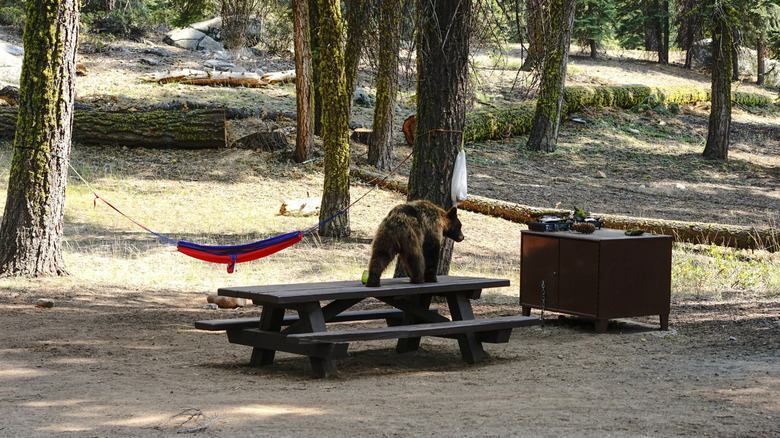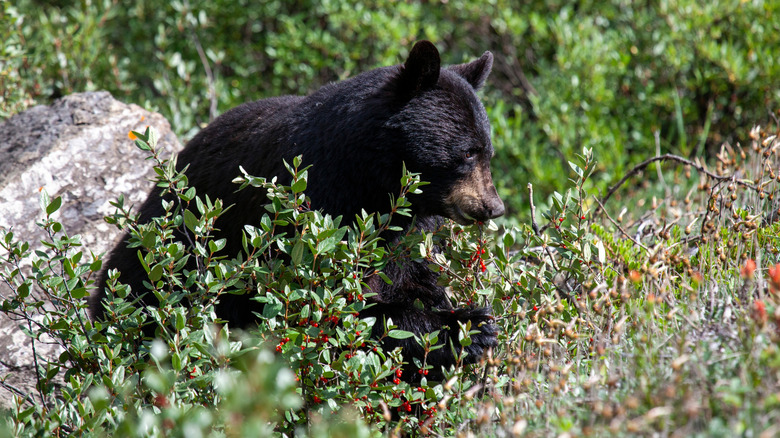The Attractive Feature You Should Never Camp Next To If You Want To Avoid A Bear Encounter
Scoring a campsite in one of the incredible U.S. national parks is a bucket list item for many. The breathtaking views, contrasting landscapes, and raw natural beauty of the country's parks are the stuff fairytales are made of. If wildlife sightings are part of your camping wish list, you may want to seek out a U.S. park where you are almost guaranteed to encounter a bear. But sharing space with these enormous, wild creatures requires certain safety measures if you're out camping or hiking and see a bear to ensure you come home with fabulous memories, as well as all of your limbs.
Think about where you plan on setting up camp and how it relates to a bear's eating habits. If you're camping in the summer or early fall, make sure you don't set up shop near a berry patch. As these sweet treats start to ripen, bears will saunter out to their favorite field to fatten up before hibernation. In fact, they can gobble up as many as 30,000 berries in a single day! In springtime, bears tend to feast on grasses and insects. So during these months, it's best to avoid pitching a tent in the middle of a grassy field, meadow, or marsh. The big, beautiful beasts are most likely to hunt and feast during dawn, dusk, and night, which means it's safer to venture out in these areas during the middle of the day.
How to avoid becoming bear food
While camping next to a berry bush may sound idyllic, it's best to avoid these areas. Even if you're not camping in close proximity to a bear's natural food source, you should make sure your own provisions do not become theirs. Store all of your food and garbage in airtight containers, keep all cooking and eating at least 100 feet away from your tent, and hang any odorous items at least 10 feet off the ground. Prior to setting up camp, look for signs of bear activity such as rocks and stumps that have been disturbed, scratch marks and fur on tree trunks, or droppings on the ground.
If you do encounter a black bear, there is specific guidance on how to react. For starters, do not run or turn your back. Stay calm and move away slowly by stepping sideways. And don't try to climb a tree to escape — bears can scale it much better than you can. And definitely do not whip out your phone and take a selfie, as the National Park Service about how dangerous these photo attempts are, but visitors still tend to forget that they are guests in the home of these wild animals.

